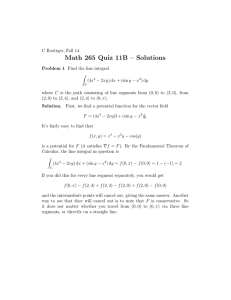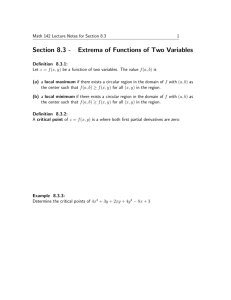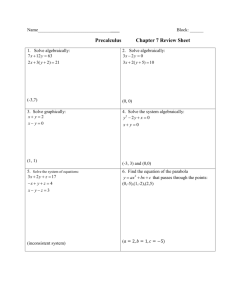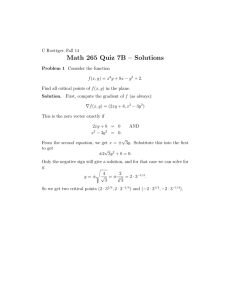Math 2250 Week 3 Quiz
advertisement
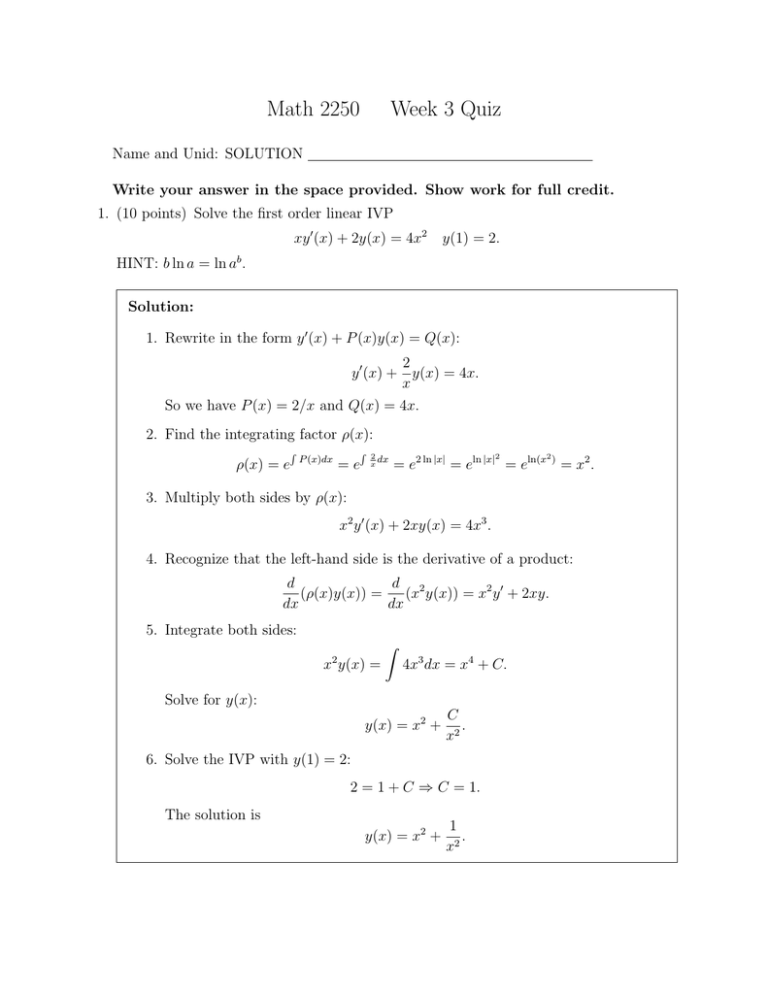
Math 2250 Week 3 Quiz Name and Unid: SOLUTION Write your answer in the space provided. Show work for full credit. 1. (10 points) Solve the first order linear IVP xy 0 (x) + 2y(x) = 4x2 y(1) = 2. HINT: b ln a = ln ab . Solution: 1. Rewrite in the form y 0 (x) + P (x)y(x) = Q(x): 2 y 0 (x) + y(x) = 4x. x So we have P (x) = 2/x and Q(x) = 4x. 2. Find the integrating factor ρ(x): R ρ(x) = e P (x)dx =e R 2 dx x 2 2 = e2 ln |x| = eln |x| = eln(x ) = x2 . 3. Multiply both sides by ρ(x): x2 y 0 (x) + 2xy(x) = 4x3 . 4. Recognize that the left-hand side is the derivative of a product: d 2 d (ρ(x)y(x)) = (x y(x)) = x2 y 0 + 2xy. dx dx 5. Integrate both sides: Z 2 x y(x) = 4x3 dx = x4 + C. Solve for y(x): y(x) = x2 + C . x2 6. Solve the IVP with y(1) = 2: 2 = 1 + C ⇒ C = 1. The solution is y(x) = x2 + 1 . x2 2. (10 points) Find the partial fraction decomposition of the fraction 3 . (1 − x)(x + 2) Solution: We want 3 A B = + . (1 − x)(x + 2) 1−x x+2 Factoring the right-hand side we have 3 A B A(x + 2) + B(1 − x) = + = . (1 − x)(x + 2) 1−x x+2 (1 − x)(x + 2) The numerators of both fractions have to be the same, thus 3 = A(x + 2) + B(1 − x) = (A − B)x + 2A + B. Since the previous equation has to be true for all x, we find ( A−B =0 2A + B = 3. The solution to the previous system is A = B and 3B = 3 that is A = B = 1. The partial fraction decomposition is 1 1 3 = + . (1 − x)(x + 2) 1−x x+2 Check your answer by combining the fraction again. Alternatively we can use the formula from class 1 1 1 1 = − . (x + a)(x + b) b−a x+a x−b Here we have 3 1 = −3 (1 − x)(x + 2) (x − 1)(x + 2) that is a = −1 and b = 2. Plugging into the formula, we find 3 1 1 1 1 1 = −3 − = + . (1 − x)(x + 2) 3 x−1 x+2 1−x x+2 Page 2
